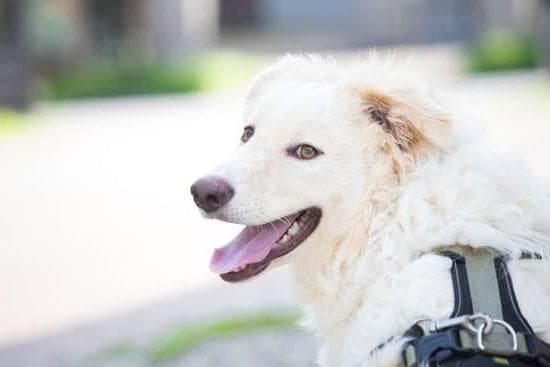Is your furry friend displaying signs of distress when you leave the house? If so, you may be dealing with a case of separation anxiety in dogs. In this article, we will explore how to train separation anxiety dogs to help them cope with being alone. From understanding the root causes of this issue to implementing positive reinforcement techniques, we’ll cover everything you need to know to support your canine companion.
Separation anxiety is a common behavior problem in dogs that can result in destructive behaviors and excessive vocalization when left alone. Before addressing the issue, it’s crucial to recognize the signs and symptoms of separation anxiety in dogs. By learning to understand your pet’s behavior, you can better tailor your training approach to meet their needs and provide them with the help they require.
Training plays a vital role in helping dogs overcome separation anxiety. Creating a comfortable environment for your pet and incorporating positive reinforcement techniques are key components of an effective training program.
We’ll delve into the importance of training for dogs with separation anxiety and discuss gradual desensitization methods as well as the incorporation of exercise and mental stimulation into a dog’s routine. Whether seeking professional help or working on building a stronger bond with your four-legged friend, there are numerous strategies available to help both you and your pet navigate through this challenging situation.
Signs and Symptoms of Separation Anxiety in Dogs
Many dogs experience separation anxiety when their owners leave them alone, and it is important to be able to recognize the signs and symptoms of this condition. One common sign of separation anxiety in dogs is excessive barking, howling, or whining when left alone.
They may also engage in destructive behaviors such as chewing on furniture, digging, or scratching at doors while their owners are away. Some dogs may even exhibit inappropriate urination or defecation inside the house when they are left alone.
In addition to these behavioral signs, there are also physical symptoms that can indicate separation anxiety in dogs. These can include drooling excessively, pacing or restlessness, and attempting to escape from the home by jumping out of windows or scratching at doors. Some dogs may also become overly attached to their owners and follow them around the house constantly.
It is important for dog owners to be aware of these signs and symptoms so they can take steps to address their pet’s separation anxiety. Without proper training and management, separation anxiety can have a negative impact on a dog’s well-being and quality of life. Recognizing these signs early on can help prevent the condition from escalating further and allow for effective intervention through training methods and creating a comfortable environment for the dog.
The Importance of Training for Dogs With Separation Anxiety
Understanding the Impact of Separation Anxiety on Dogs
Separation anxiety in dogs can have a significant impact on their well-being and behavior. When left untreated, this condition can lead to destructive behaviors such as excessive barking, chewing, and even attempts to escape. Dogs experiencing separation anxiety may also exhibit symptoms of distress such as pacing, panting, and urinating or defecating indoors. It’s important for dog owners to recognize the signs of separation anxiety and take proactive steps to address this issue through training.
The Role of Training in Alleviating Separation Anxiety
Training plays a crucial role in helping dogs with separation anxiety learn how to cope with being alone. By implementing training techniques, dog owners can help their pets feel more relaxed and secure when left at home. Through training, dogs can develop the confidence and coping skills needed to reduce their anxiety levels and engage in more appropriate behaviors while alone.
Building Trust and Security Through Training
Training for separation anxiety not only addresses the negative behaviors associated with this condition but also helps build a stronger bond between dogs and their owners. Positive reinforcement techniques used in training can enhance the trust and security that dogs feel when their owners are away.
Additionally, consistent training practices create a sense of routine and predictability for dogs, which can further alleviate their anxiety. Ultimately, investing time and effort into training for separation anxiety can lead to a happier and healthier relationship between dogs and their human companions.
Creating a Comfortable Environment for Dogs With Separation Anxiety
When it comes to helping dogs with separation anxiety, creating a comfortable environment is crucial in alleviating their stress and anxiety when left alone. One important aspect of this is providing a safe and secure space for your dog.
This can be achieved by setting up a designated area in the home where your dog feels secure and relaxed. Whether it’s a crate, a specific room, or a cozy corner with their bed and favorite toys, having a place that they associate with safety can significantly reduce their anxiety.
In addition to creating a safe space, it’s also important to establish a routine for your dog. Dogs thrive on predictability, so having set feeding times, exercise schedules, and consistent daily routines can help reduce their anxiety when you’re not around. When they know what to expect, it provides them with a sense of security and stability.
Another key component of creating a comfortable environment for dogs with separation anxiety is providing them with mental stimulation. This can include puzzle toys, interactive feeders, or treat-dispensing toys that keep them engaged and entertained while you’re away. Mental stimulation not only helps keep their minds occupied but can also prevent boredom and destructive behavior often associated with separation anxiety.
| Aspect | Description |
|---|---|
| Safe Space | Designated area in the home where the dog feels secure |
| Establishing Routine | Set feeding times, exercise schedules, and consistent daily routines |
| Mental Stimulation | Puzzle toys, interactive feeders or treat-dispensing toys to keep the dog engaged and entertained |
Positive Reinforcement Training Techniques for Separation Anxiety
When dealing with separation anxiety in dogs, positive reinforcement training techniques can be an effective way to address and manage this behavioral issue. Positive reinforcement involves rewarding your dog for displaying the desired behavior, which can help build their confidence and reduce their anxiety when left alone. One example of positive reinforcement is giving your dog a treat or verbal praise when they remain calm while you are out of sight.
It’s important to start by positively reinforcing small periods of alone time, gradually increasing the duration as your dog becomes more comfortable with being on their own. This process helps them associate being alone with something positive, rather than something stressful. Consistency is key in using positive reinforcement techniques, as inconsistency may lead to confusion or setbacks in progress.
In addition to treats and praise, interactive toys and puzzles can also be used as part of positive reinforcement training for separation anxiety. These toys not only provide mental stimulation but can also distract and engage your dog while you are away, helping to alleviate feelings of distress. When combined with other management strategies, like creating a comfortable environment and providing ample exercise, positive reinforcement training can contribute to reducing separation anxiety in dogs.
| Positive Reinforcement | Separation Anxiety Training |
|---|---|
| Rewarding desired behavior | Gradually increasing alone time |
| Consistency in training | Interactive toys and puzzles |
| Building confidence | Mental stimulation and distraction |
Gradual Desensitization Training for Separation Anxiety
Understanding Gradual Desensitization
One effective way to help dogs with separation anxiety is through gradual desensitization training. This technique involves slowly getting the dog used to being alone in small increments, ultimately helping them feel more comfortable when their owners are away. By gradually increasing the time spent apart, the dog can learn that being alone is not something to fear.
Steps for Gradual Desensitization Training
To begin gradual desensitization training, start by practicing short periods of separation from the dog. This could involve leaving the house for just a few minutes and gradually increasing the time as the dog becomes more comfortable with being alone. It’s essential to monitor the dog’s behavior during these sessions and only progress to longer periods of time when they show signs of reduced anxiety.
Another important aspect of this training is to ensure that the dog has a positive association with being left alone. Providing them with a special treat or toy that they only receive when you are away can help create a positive reinforcement. Additionally, making sure they have access to their favorite spot or room while you are gone can also help them feel more at ease.
Patient and Consistent Approach
It’s crucial for pet owners to approach gradual desensitization training with patience and consistency. Rushing or forcing the process can lead to setbacks in progress and an increase in anxiety for the dog. Consistently practicing this technique over time can help build their confidence and reduce separation anxiety in the long run.
Incorporating Exercise and Mental Stimulation Into a Dog’s Routine
When dealing with a dog suffering from separation anxiety, it’s important to consider all aspects of their well-being. Incorporating exercise and mental stimulation into a dog’s routine can have a significant impact on their overall behavior and emotional state. Here are some key strategies to consider when implementing these elements into your dog’s daily activities:
- Regular Exercise: Providing your dog with regular physical activity is essential for their mental and emotional health. Daily walks, playtime, and engaging in interactive games can help reduce stress and anxiety while also promoting better behavior.
- Mental Stimulation: Dogs with separation anxiety can benefit from various forms of mental stimulation, such as puzzle toys, obedience training, scent work, and interactive feeding methods. These activities can keep their minds engaged and prevent boredom, which often contributes to anxious behaviors.
In addition to regular exercise and mental stimulation, it’s also important to ensure that your dog is receiving proper socialization opportunities. This can include organized playdates with other dogs, visits to the dog park, or supervised interactions with well-behaved canine companions.
Creating a well-rounded routine that incorporates physical activity, mental stimulation, and socialization can significantly improve the overall well-being of dogs with separation anxiety. By addressing these needs, you can help your dog feel more balanced, content, and better equipped to cope with being alone.
Seeking Professional Help for Dogs With Severe Separation Anxiety
For dogs with severe separation anxiety, seeking professional help is often necessary to effectively address and manage their condition. While some cases of separation anxiety can be managed through training and behavior modification techniques, other dogs may require the expertise of a professional dog behaviorist or veterinarian.
Professional help for dogs with severe separation anxiety may include:
- Consulting with a certified dog behaviorist or trainer who specializes in separation anxiety
- Collaborating with a veterinarian to explore medical interventions such as medication or supplements to alleviate anxiety symptoms
- Participating in structured desensitization and counter-conditioning programs tailored to the individual dog’s needs
It’s important for pet owners to understand that addressing severe separation anxiety in dogs can be a complex and challenging process. Professional help can provide the knowledge and skills needed to develop a comprehensive treatment plan that takes into account the dog’s unique triggers, behaviors, and overall well-being. By working closely with experienced professionals, pet owners can gain valuable insights and support as they navigate through the process of helping their dogs overcome severe separation anxiety.
Ultimately, seeking professional help demonstrates a commitment to providing the best possible care for dogs struggling with severe separation anxiety. With the guidance of trained experts, pet owners can optimize their efforts in helping their beloved pets lead happier, more balanced lives.
Conclusion
In conclusion, training for separation anxiety in dogs is not only important for addressing the behavior, but it also provides an opportunity to strengthen the bond between you and your furry friend. By understanding the signs and symptoms of separation anxiety and implementing positive reinforcement techniques, you can create a comfortable environment for your dog and gradually desensitize them to being alone.
In addition, incorporating regular exercise and mental stimulation into their routine can help reduce anxiety and provide a healthy outlet for their energy.
Training for separation anxiety is a process that requires patience, consistency, and a deep understanding of your dog’s needs. It is essential to approach this training with empathy and compassion, as your dog’s anxiety is a real and distressing experience for them. Seeking professional help may be necessary for dogs with severe separation anxiety, as they may require specialized treatment or medication to manage their condition effectively.
Overall, by taking the time to train and support your dog through their separation anxiety, you are not only helping them overcome a challenging behavior but also building a stronger bond based on trust, communication, and understanding. With dedication and effort, you can make a positive impact on your dog’s well-being while nurturing a deeper connection with them.
Frequently Asked Questions
How Do You Fix a Dog With Separation Anxiety?
Fixing a dog with separation anxiety involves a combination of behavior modification techniques, desensitization, and possibly the use of medications. It is important to gradually help the dog become more comfortable being alone by starting with short periods of separation and slowly increasing the time apart.
Creating a calm environment, providing mental stimulation, and using positive reinforcement for good behavior can also help in addressing separation anxiety in dogs.
How Do I Train My Dog to Be Alone With Separation Anxiety?
Training a dog with separation anxiety to be alone requires patience, consistency, and gradual exposure to being alone. This can involve practicing leaving the dog for short periods of time, providing distractions such as toys or treats, and rewarding calm behavior.
Slowly increasing the time spent apart while ensuring the dog feels safe and secure can help in training them to be alone without experiencing extreme distress.
Can Dogs Grow Out of Separation Anxiety?
Yes, dogs can grow out of separation anxiety with proper training and management. As they become more accustomed to being alone and learn coping mechanisms for their anxiety, many dogs may experience a reduction in their symptoms over time.
However, some dogs may require ongoing support and management to address their separation anxiety throughout their lives. Each dog is different, so it’s important to tailor treatment to their individual needs.

Welcome to the blog! I am a professional dog trainer and have been working with dogs for many years. In this blog, I will be discussing various topics related to dog training, including tips, tricks, and advice. I hope you find this information helpful and informative. Thanks for reading!





